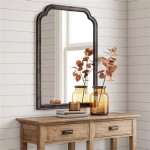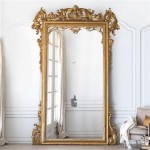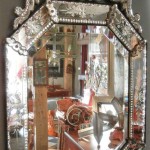How To Cut a Mirror with a Glass Cutter
Cutting a mirror requires precision and the right tools to achieve a clean, accurate break. While seemingly daunting, this task can be accomplished successfully with careful preparation and execution. This article outlines the necessary steps and precautions for cutting a mirror using a glass cutter.
Essential Tools and Materials: Before beginning, gather the following:
- Glass Cutter: A quality glass cutter with a sharp, carbide wheel is crucial. Oil-fed cutters provide smoother scoring and longer wheel life.
- Thick, Flat Surface: A sturdy, flat surface like a thick piece of plywood or a dedicated cutting table is essential for supporting the mirror during the cutting process.
- Ruler or Straight Edge: A metal ruler or straight edge ensures a straight cutting line. The ruler should be thicker than the mirror to prevent the cutter from slipping.
- Measuring Tape: Accurate measurements are vital for achieving the desired mirror size.
- Safety Glasses: Protecting one's eyes from glass shards is paramount. Safety glasses are indispensable during this process.
- Gloves: Thick gloves protect hands from sharp edges and provide a better grip on the mirror.
- Lubricant (Cutting Oil): Lubricant reduces friction between the cutter wheel and the mirror surface, resulting in a smoother score and extending the cutter's lifespan.
- Running Pliers (Optional): Running pliers specifically designed for breaking glass can assist in cleanly separating the scored mirror.
- Grozing Pliers (Optional): Grozing pliers are useful for nibbling away small pieces of glass or refining the cut edge.
Preparing the Mirror and Work Surface: Clean the mirror thoroughly with glass cleaner to remove any dust, dirt, or grease. Even minor particles can interfere with the scoring process and lead to an uneven break. Ensure the work surface is clean, stable, and free of debris.
Measuring and Marking: Using the measuring tape, carefully measure and mark the desired cutting line on the mirror's surface. A fine-tipped marker designed for glass is recommended for clear visibility. Double-check measurements before proceeding to the cutting stage.
Scoring the Mirror: Place the ruler firmly along the marked line, ensuring it extends beyond the edge of the mirror. Hold the glass cutter firmly against the ruler, applying consistent pressure. Making a single, smooth, continuous score is crucial for a clean break. Avoid pressing too hard, as this can damage the mirror or create an uneven score. If using an oil-fed cutter, ensure it is adequately filled with cutting oil. For other cutters, apply lubricant along the cutting line before scoring.
Breaking the Mirror: Once the mirror is scored, position it so the score line hangs slightly over the edge of the work surface. With gloves on, apply firm, even pressure on both sides of the score line, pushing downwards. The mirror should break cleanly along the score. If the break is not immediate, gently tap the underside of the score line with the handle of the glass cutter.
Using Running Pliers (Optional): Running pliers offer more control over the breaking process, particularly with larger mirrors. Position the pliers with the center groove directly over the score line. Gently squeeze the pliers to initiate the break. The pliers apply pressure evenly along the score, resulting in a cleaner separation.
Smoothing the Edges (Optional): After breaking the mirror, the edges will likely be sharp. Grozing pliers can be used to carefully nibble away any sharp protrusions or irregularities, creating a smoother, safer edge. Alternatively, fine-grit sandpaper can be used to smooth the edges. Always wear gloves when handling cut glass edges.
Safety Precautions: Working with glass involves inherent risks. Adhering to safety precautions is paramount throughout the process. Always wear safety glasses and gloves. Dispose of broken glass pieces carefully in a designated container, clearly labeled to prevent accidental injuries. Keep children and pets away from the work area.
Practicing on Scrap Glass: Before attempting to cut a valuable mirror, practicing on scrap glass pieces is highly recommended. This allows one to become familiar with the tools, techniques, and the pressure required for successful cutting. Experimenting with different scoring pressures and break techniques on scrap glass will build confidence and improve the likelihood of a successful cut on the final mirror piece.
Alternative Cutting Methods: For complex shapes or curved cuts, a professional glass cutter may be necessary. They possess specialized tools and expertise to handle intricate cuts with precision. Consulting a professional is advisable for complex projects or if one feels uncomfortable handling the cutting process independently.

How To Cut Mirror For Diy Mirrored Furniture Salvaged Inspirations

How To Cut Mirror For Diy Mirrored Furniture Salvaged Inspirations

How To Cut A Mirror Comprehensive Guide

Cutting Glass A Z

Glass Cutting Trick Without Cutter With A Knife

Glasscutting Tutorial Car Mirrors

How To Cut Glass Beginner Tips

How To Cut Mirror For Diy Mirrored Furniture Salvaged Inspirations

How To Cut Mirror Or Glass

Gem Mirror Diy Easy Glass Cutting Technique A Beautiful Mess








